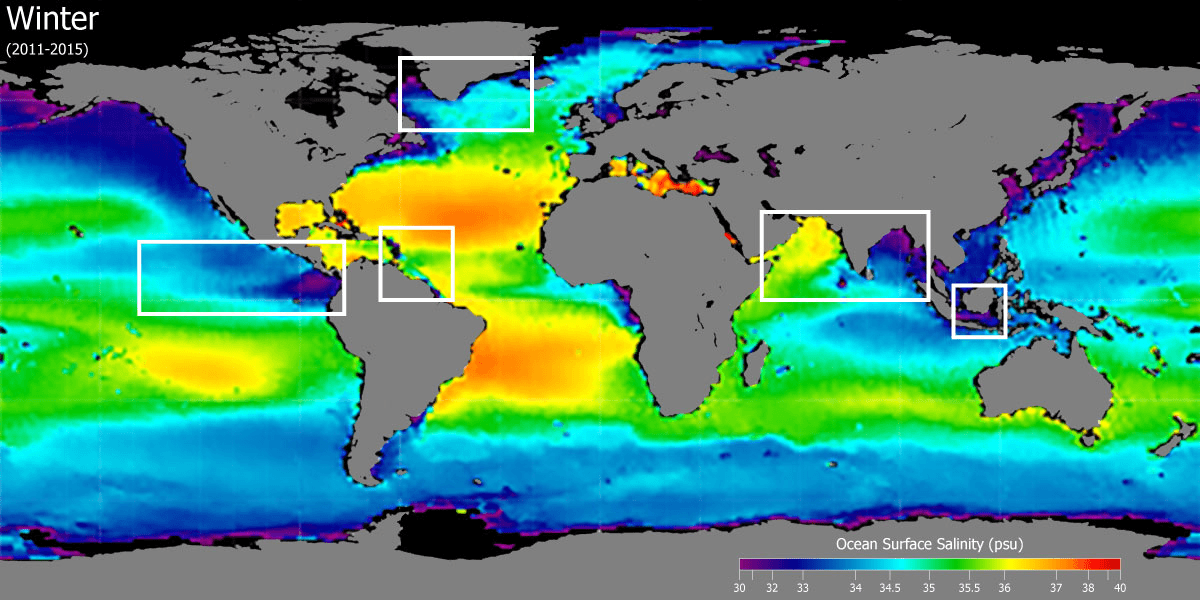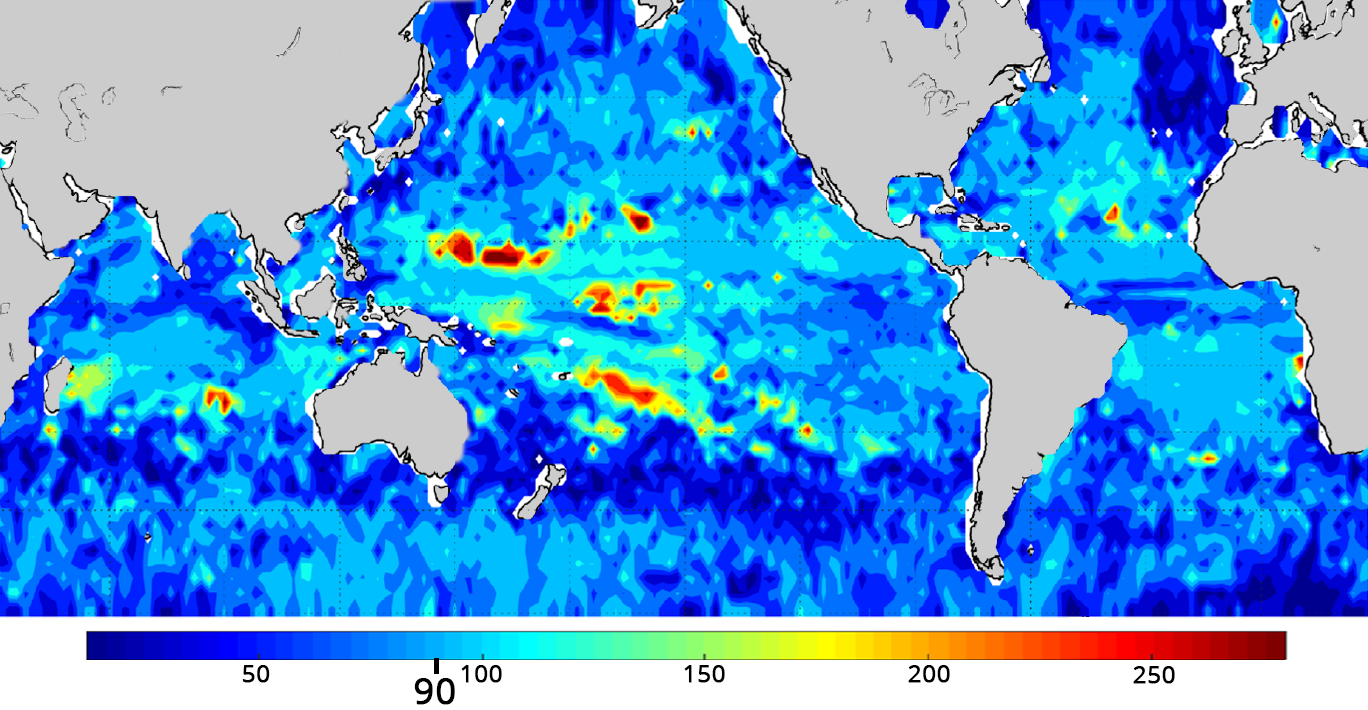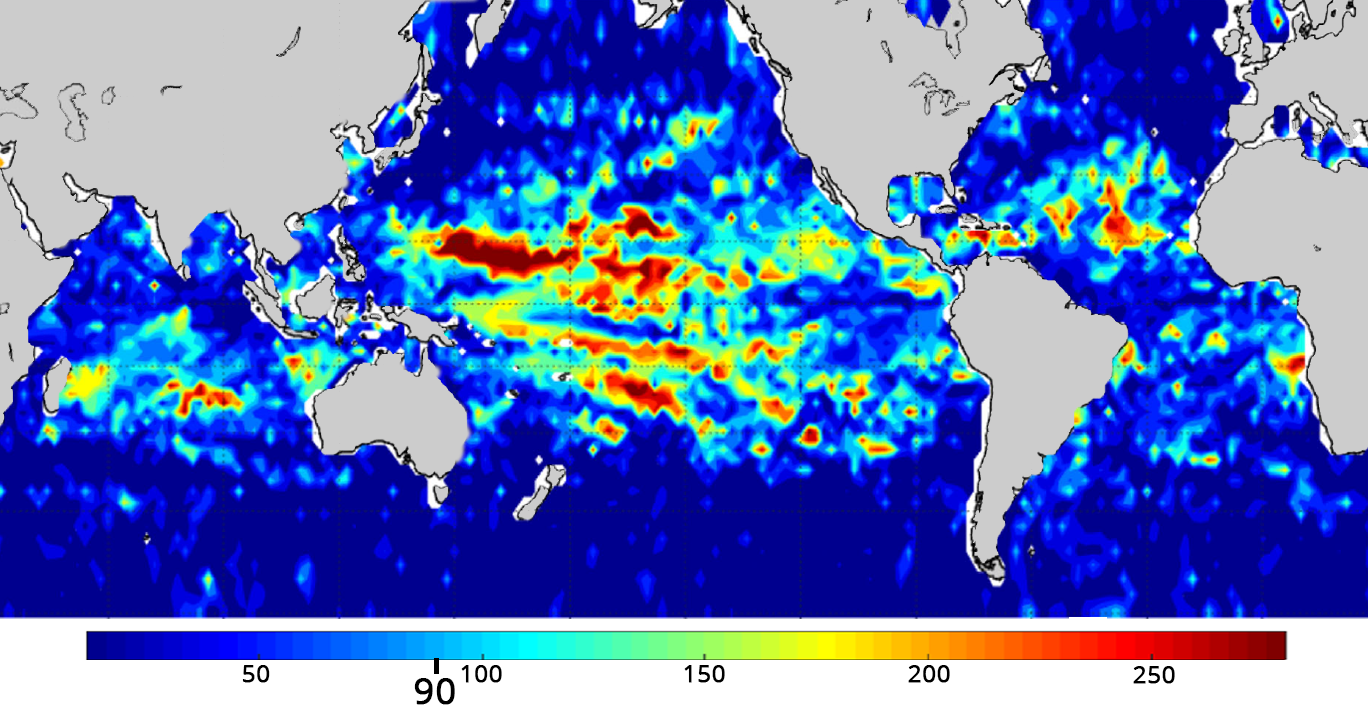We observe the seasons around us. You may experience long winters and mild summers or mild winters and hot/humid summers. Or perhaps you live in the tropics where temperatures are relatively constant but the seasons are "wet" and "dry."
Salinity in our ocean also has seasonal patterns. It generally rises and falls in one cycle per year. In other words, most places have annual high and low salinities. When it comes to salinity, tropical areas have the largest seasonal cycle of salinity. These patterns are unlike ocean temperature, where mid-latitude areas show the greatest variation throughout the year.
What causes salinity to change during the year? It is not about adding or removing salt from ocean basins, it's about adding or removing freshwater. The primary ways that freshwater is removed from the ocean are evaporation or the freezing of seawater (i.e., making sea ice). On the other hand, freshwater is added to the ocean by precipitation, ice melt, and river runoff. So, changes in ocean salinity are tied to the global water cycle... which is, of course, seasonal.



This paper sought to capture the dominant harmonic patterns of seasonal variations of sea surface salinity (SSS) in the ocean. To address these questions, 2016-2018 data from four satellites were examined and compared to two in situ data sets (Argo and EN4) and the longer term World Ocean Atlas. Globally, the ocean had a strong annual harmonic - a defined cycle with one one salinity maximum and minimum during the year. Seminannual harmonics (i.e., two maximums and two minimums per year) were important in specific areas with unique weather patterns, namely monsoon regions and major rivers.
Most of the global ocean had an annual cycle of SSS less than 0.3 practical salinity scale. Areas with the greatest annual fluctuation in salinity were the tropical Atlantic and the Pacific in the Inter-Tropical Convergence Zone, the South Pacific Convergence Zone, and the northern North Atlantic with its seasonal ice melt. In general, areas with the greatest fluctuations were those influenced by freshwater sources - rainfall, river discharge, ice melt.
Yu, L., Bingham, F.M., Lee, T., Dinnat, E.P., Fournier, S., Melnichenko, O., Tang, W., and Yueh, S.H. (2021). View the full paper.
While Yu et al. (2021) focused on global, basin-scale sea surface salinity (SSS) over three years compared to the World Ocean Atlas, this article took the approach of examining the full 9 year satellite SSS data set and comparing it to the Global Tropical Moored Buoy Array at the level of individual moorings. The end results were similar, providing further support that satellites are able to observe the seasonal cycle of SSS and that we have a good understanding of the dynamics of that seasonal cycle.
This study found the satellite and mooring data sets to be comparable in that they showed the same seasonal features in salinity - the largest amplitude changes were by the Congo and Amazon River outflow areas, the western tropical Indian Ocean, and the North Pacific around 10°N. In the Northern Hemisphere, the time of annual max SSS (i.e., phase) was between February-May, while in the Southern Hemisphere it was between July-December. Outliers to this timing included the monsoon driven Bay of Bengal with its max SSS in October prior to monsoon season.
Bingham, F.M., Brodnitz, S., and Yu, L. (2021). View the full paper.
In this paper, ten years of Argo data are analyzed to learn more about climatology and seasonality of salinity in the global upper ocean. Note that many of the studies included in this highlight use Argo data to compare to satellite data, so although Argo floats are in situ sampling devices, they are instrumental in using satellite data.
Several key features of salinity seasonal variability extracted from this analysis, include: 1) Seasonal variability, both it in its annul and semiannual components, penetrates the upper ocean down to 2,000 meters. 2) Unlike temperature where the midlatitudes have greater seasonal variation, salinity varies most across seasons in the tropics. 3) In surface waters, salinity seasonal dynamics are driven by evaporation/precipitation and river runoff; below 100 meters, seasonal variability is driven by currents and circulation patterns.
Chen, G., Peng, L., and Ma, C. (2018). View the full paper.